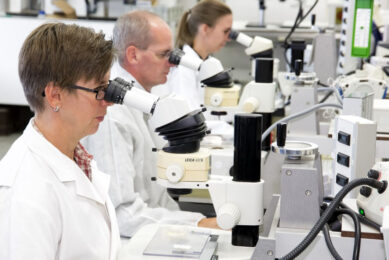Short-interval challenge leads to superinfection of Marek’s disease
Researchers from the USDA, Agricultural Research Service in the US studied the effect of the time interval between exposures on the susceptibility of chickens to superinfection with Marek’s disease virus.
Marek’s disease virus (MDV) is ubiquitous within commercial poultry flocks because current vaccines do not prevent MDV infection or transmission. In order for newly-evolved MDV strains to become established within a flock, it seems inevitable that any new strain would need to infect and replicate in chickens previously infected with resident MDV strains. This phenomenon is difficult to detect and there is no clear evidence that it is even possible.
Four experiments were performed to demonstrate superinfection and evaluate the effect of time between challenges on the effect of superinfection with the use of two pairs of fully virulent MDV strains that could be discriminated by novel technology: 1) JM/102W and rMd5//38CVI, and 2) rMd5 and rMd5//38CVI. Feather follicle epithelium (FFE), spleen, and tumor samples were collected at single or multiple time points from the same bird to determine the frequency and distribution of each virus present following superinfection, with the use of pyrosequencing and immunohistochemistry.
Superinfection was observed in 82 of 149 (55%) FFE samples following short-interval challenge (24 hr) compared to only 6 of 121 (5%) samples following long-interval challenge (13 days), indicating a strong influence of challenge interval. In cases where the first inoculated virus was weak or delayed, the second inoculated virus was detected in 42 of 95 (44%) birds. In tumors from dually challenged birds, the second virus was again present much more often following short-interval challenge (68%) compared to long-interval challenge (11%). Virus mixtures in tumors were less common compared to those in FFE samples. Vaccination with turkey herpesvirus had no significant effect on the virus frequency for either virus pair or challenge time interval, suggesting these conclusions may be applicable to vaccinated chickens in the field.
These studies demonstrated superinfection for the first time with two fully virulent MDV strains and suggest that short-interval challenge exposure and/or weak initial exposures may be important factors leading to superinfection -a prerequisite for the establishment of a second virus strain in the population. This model system should be useful to elucidate this important phenomenon further.
This study was published in Avian Diseases, 2010 Sep;54(3)













